This utterly absurd post appeared yesterday on the CT Ed Reform blog:
Essentially, the argument goes:
- CT’s achievement gap is worse than achievement gaps in states like Massachusetts and New Jersey and in particular, CT’s low income students perform less well than low income students in those states.
- Massachusetts has recently adopted reforms to teacher evaluation, which is obviously why Massachusetts has a smaller achievement gap and better performance among low income students. (the post cites New Jersey as well)
- THEREFORE, WE KNOW THAT POVERTY IS NOT THE ISSUE…. IT’S TEACHER EVALUATION (and Charter schools, and other reformy stuff)!
- Therefore, the solution is to pass SB24 in its original form, which includes such fun things as student test based evaluation of teachers (3 good years to tenure, 2 bad and you’re out), additional funding for and expansion of charter schools – which we know can overcome this pesky poverty distraction!
Now, before I even begin here, I found it most absurd that this particular Ed Reform posting attributed progress made in Massachusetts over the past two decades, to policies adopted in the past two years! As they put it:
We think folks would be hard-pressed to argue that low-income students right over the border in Massachusetts or New Jersey face very different circumstances at home than the low-income students in Connecticut. So, what actions have our neighboring states taken to address their achievement gaps that Connecticut hasn’t? Put bluntly, they have adopted education reform policies very similar to the ones proposed in Governor Malloy’s original education reform bill. They have adopted or implemented policies that evaluate teachers on the basis of student performance, that rank schools and districts within a tiered intervention framework, and that provide the Commissioner with the authority to intervene in the lowest performing schools and districts.
That’s just funny! Ridiculous in fact, making me wonder if this really was just an April fool’s joke. Let’s make this really plain and simple.
Policies adopted in Massachusetts in the past two years and not yet even fully implemented did not cause low income children in Massachusetts to outperform low income children in Connecticut between 1992 and 2009!
And about New Jersey, I’m not quite sure what policies (legislation) they are talking about, since legislation regarding teacher evaluation is still in its early incubation stages. Pilot studies have begun in a handful of districts but to suggest that pilot studies being implemented and evaluated now somehow explain past performance of low income students in New Jersey is, well, just dumb.
Now, Massachusetts and New Jersey have in fact implemented reforms that Connecticut has not – SCHOOL FINANCE REFORMS (in Mass, coupled with accountability reforms in the 1990s). Both states have more systematically targeted funding to higher need districts. And for a review of the literature on the effects of such school finance reforms, with specific references to New Jersey and Massachusetts, see:
- http://www.tcrecord.org/library/abstract.asp?ContentId=16106
- http://www.shankerinstitute.org/images/doesmoneymatter_final.pdf
While Connecticut has selectively driven magnet aid to Hartford and New Haven, Connecticut has left other high need districts out entirely. Further, in recent years, as shown in a previous post, Connecticut charter schools have substantively segregated students by income within Hartford, New Haven and Bridgeport.
Here’s a quick snapshot, using 2009 data, of the relationship between current spending per pupil and U.S. Census poverty rates for districts enrolling over 2,000 pupil within New Jersey, Massachusetts and Connecticut. The notable feature of these graphs, indicated by the r-squared value is that in both Massachusetts and New Jersey, current spending per pupil is far more predictably a function of differences in local district poverty rates (adjusted for regional cost variation). In New Jersey and Massachusetts, poverty variation explains more than a third, to nearly half the variation in per pupil spending, and in Connecticut, less than 1/6!
Financial data: http://www.census.gov/govs/school/
Poverty data: http://www.census.gov/did/www/saipe/data/schools/data/index.html
Now, on to other issues: That achievement gap!
Yes, Connecticut does have a relatively large achievement gap, but that gap has to be put in context with similar states, as I explain here. The short version of this story is that the low income- non-low income achievement gaps across states are largely a function of the income gaps between the two groups. Here’s my graph of that relationship:
In the upper right hand corner of this graph are the states with both large income gaps between poor and non-poor kids and with large achievement gaps between them. Yes, Connecticut’s gaps are larger than those of Mass or New Jersey, and those are perhaps the most relevant comparison states (the post got that right – but that’s about all).
We know the correlates of student achievement across CT schools: Poverty!
As it turns out, across these three states, in each case, lower income students perform less well on NAEP. Children qualified for reduced lunch perform less well than those not qualified for subsidized meals at all, and children qualified for free lunch perform less well than those who qualify for reduced price lunch. That’s why, in some cases, I choose t parse these populations in comparisons where most schools serve children below the upper threshold.
Data source: http://nces.ed.gov/nationsreportcard/naepdata/dataset.aspx
Data source: http://nces.ed.gov/nationsreportcard/naepdata/dataset.aspx
It also turns out that if we just go nutty with lots of different measures across Connecticut districts to identify those factors that are most highly correlated with student achievement measures (all data can be found here: http://sdeportal.ct.gov/Cedar/WEB/ct_report/DTHome.aspx & http://www.nces.ed.gov/ccd/bat) we find that various measures of poverty or household income are pretty darn highly associated with student outcome measures! This would seem to suggest that perhaps poverty and measures related to it do likely matter in some way. We’re talking about correlations near and above .80 here between % free/reduced and CMT scores across districts!
We know which districts have greater needs, by various measures!
The reality is that by any number of measures of income or poverty, we know which Connecticut districts have greater student needs, low income and in many cases more children with Limited English Language proficiency. Here are the scatterplots of the relationships between poverty, income and ELL measures used in the above correlation analysis.
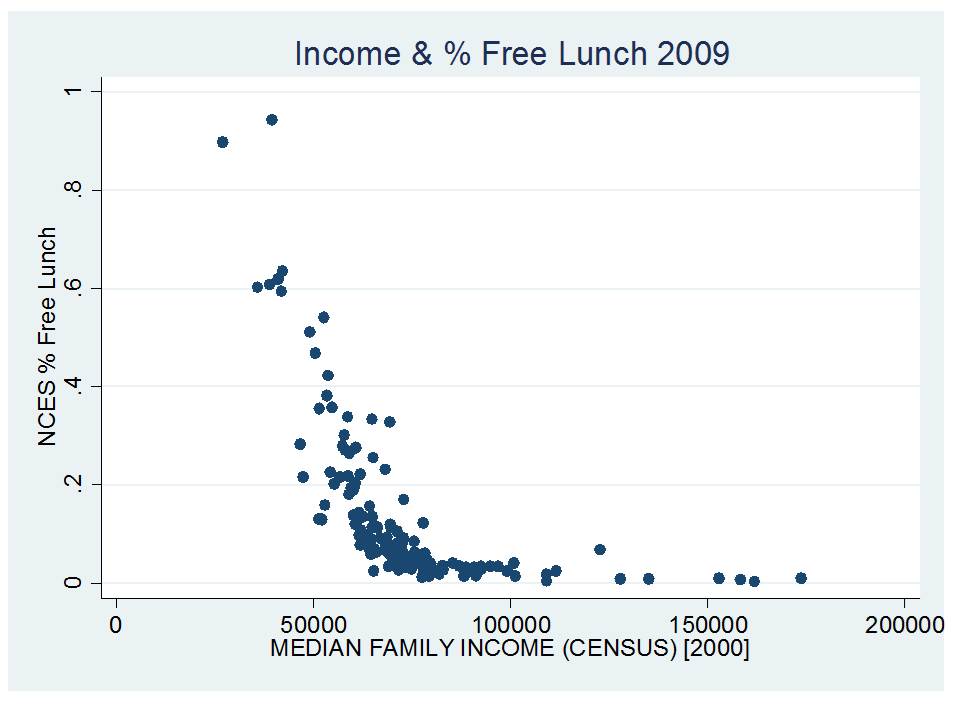
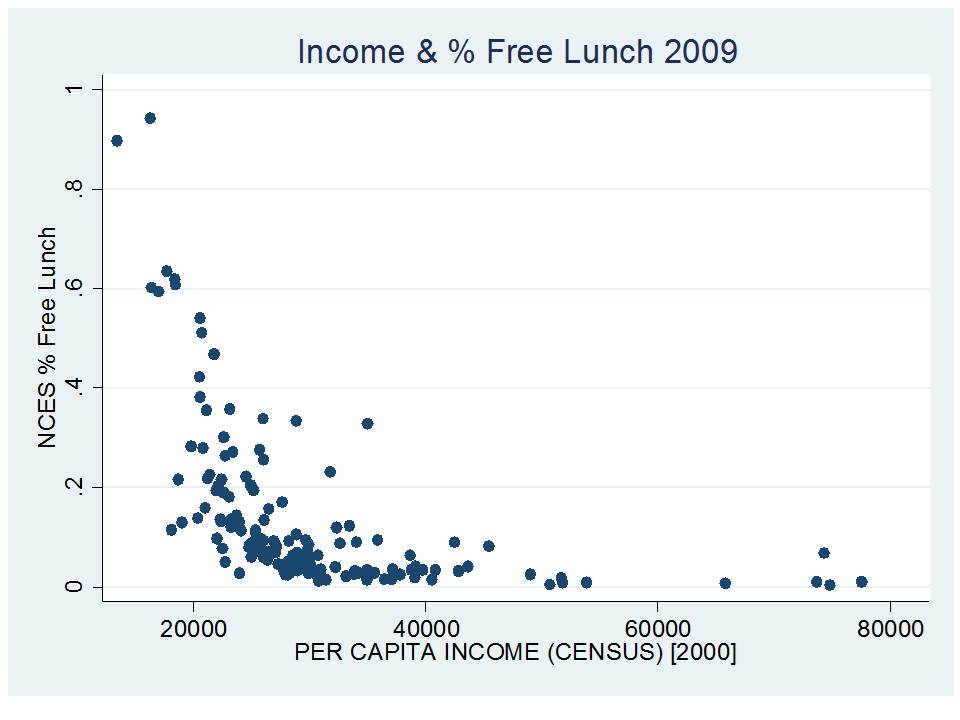
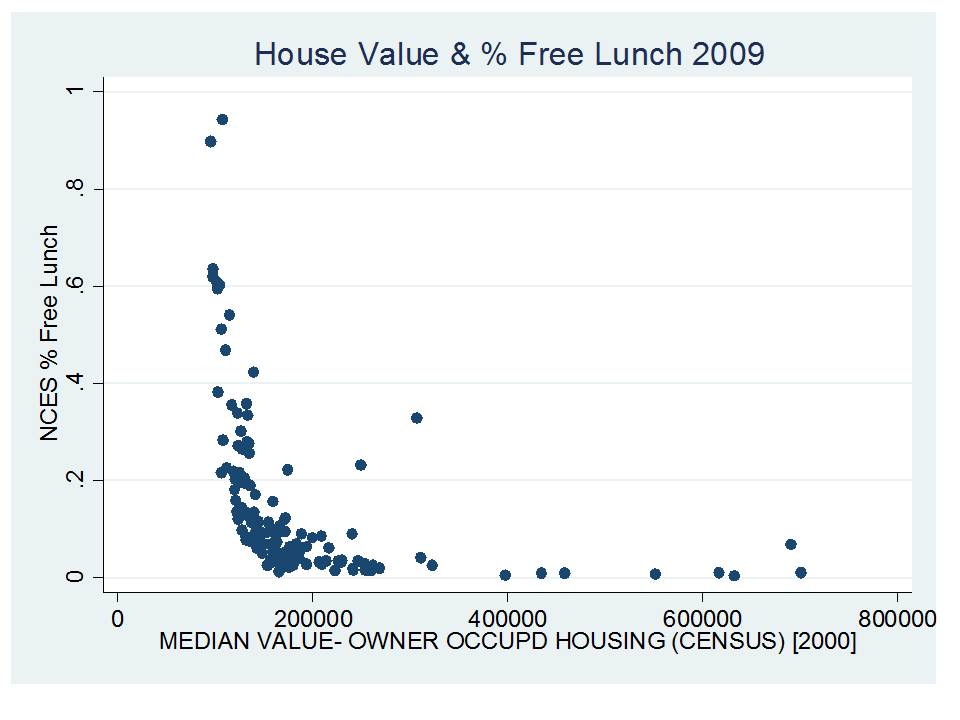
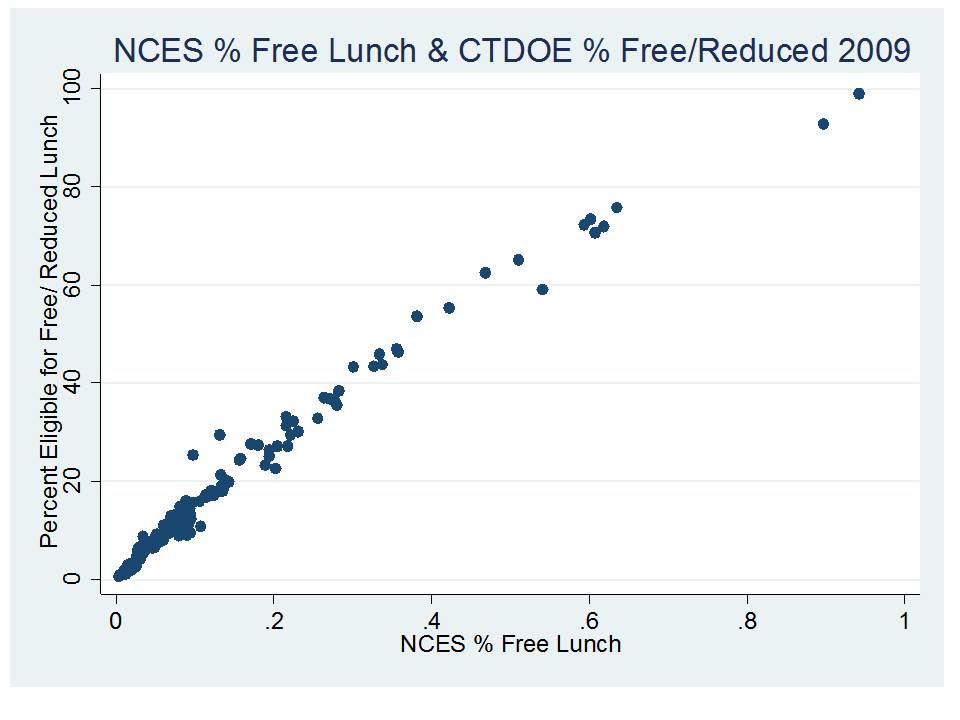
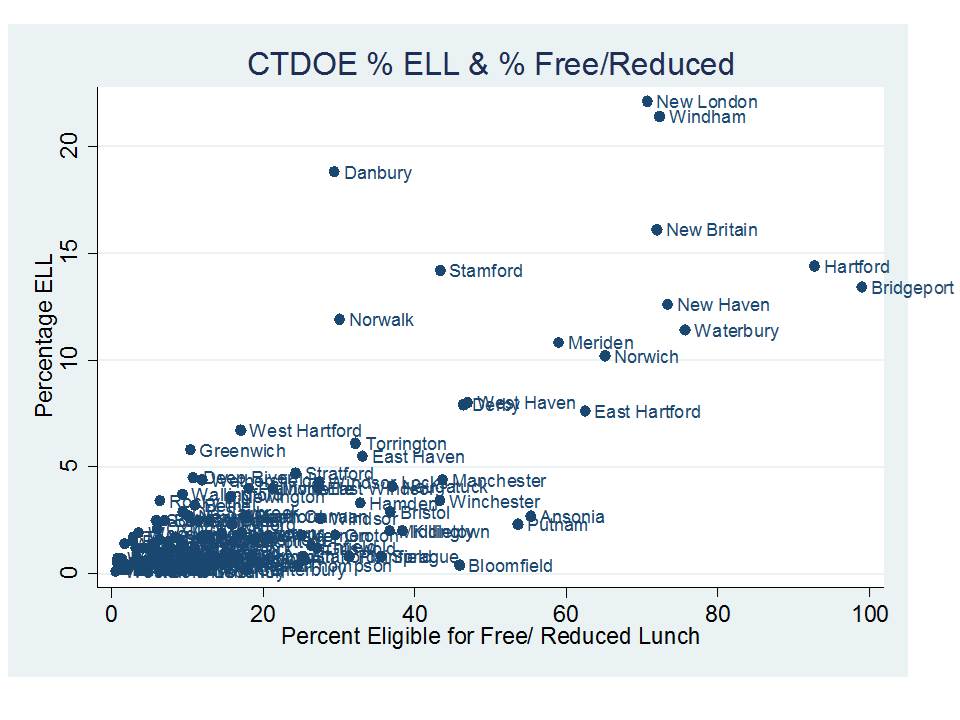 Yep. It’s all pretty straightforward. Various measures of income and poverty are pretty highly related across Connecticut. It’s a highly socioeconomically and racially segregated state. And student outcome measures remain highly correlated with socio-economic measures and with racial composition of school districts!
Yep. It’s all pretty straightforward. Various measures of income and poverty are pretty highly related across Connecticut. It’s a highly socioeconomically and racially segregated state. And student outcome measures remain highly correlated with socio-economic measures and with racial composition of school districts!
Malloy’s plan does little or nothing to help them financially
We also know from my previous posts that the Malloy plan does little or nothing to infuse additional resources into the highest need districts. Here it is again!
Additional data sources suggest that CT charters serve fewer needy kids and spend more per pupil than surrounding district schools
But, the Malloy plan does include substantial boost in funding for charter schools which I have shown in previous posts, tend to serve the less needy kids within the highest need settings in the state. Further, I have shown in those earlier posts that Connecticut charter schools don’t appear to be systematically financially disadvantaged when compared to traditional public schools.
I recalled the other day that the new U.S. Department of Education school site data set released a short while ago includes per pupil spending figures for charter schools in some states. Among those states is Connecticut. The report and data also include information on shares of children by school who are low income.
Here are a few quick snapshots of how Connecticut charter schools in Hartford, New Haven and Bridgeport compare in terms of spending and poverty to “regular” public schools in each of those host districts.
First, without charter names:
Data source: http://www2.ed.gov/about/offices/list/opepd/ppss/reports.html#comparability-state-local-expenditures
[Note that the data set has the variable labeled as “school poverty rate” when in fact it is, I believe, a % free or reduced lunch measure. I’ve left the data label as it is in the original data set]
Now, with the names:
Data source: http://www2.ed.gov/about/offices/list/opepd/ppss/reports.html#comparability-state-local-expenditures
[Note that the data set has the variable labeled as “school poverty rate” when in fact it is, I believe, a % free or reduced lunch measure. I’ve left the data label as it is in the original data set]
A few things are notable here.
First, overall, there’s simply no upward tilt in per pupil spending by school poverty rate. That said, I’m only looking here within higher poverty settings (with the trendline determined by the regular public schools only). In other words, higher poverty schools don’t generally have more resources per pupil than lower poverty ones within these cities, but my experience with similar data in other settings indicates that these variations are most often explained by the distribution of children with disabilities (also scarce in CT charters).
Second, as I illustrated in my previous post, the charter schools in these cities stand out in terms of the populations they serve (by low income status). New Haven schools have somewhat of a spread of low income rates, but Hartford and Bridgeport are all crunched up against the 100% mark (not all at 100% though, and with some more spread when I use free lunch only). In each case, charter % low income is lower than most regular schools in the host district.
Third, consistent with my previous analysis (but likely because the state reported the data to USDOE), many (more than not & all Achievement 1st schools) charter schools appear to be spending not only more than schools serving similar student populations (by income status), of which there are very few in these settings, but also more than district schools serving much lower income student populations.
These data certainly raise questions about the validity of the current policy push in Connecticut and raise even more questions about the stated reasons for that push. That is, to the extent that anyone truly believes the absurd rhetoric that test-based teacher evaluation policies and expanding higher spending lower poverty charter schools are the solution to Connecticut’s achievement gap.
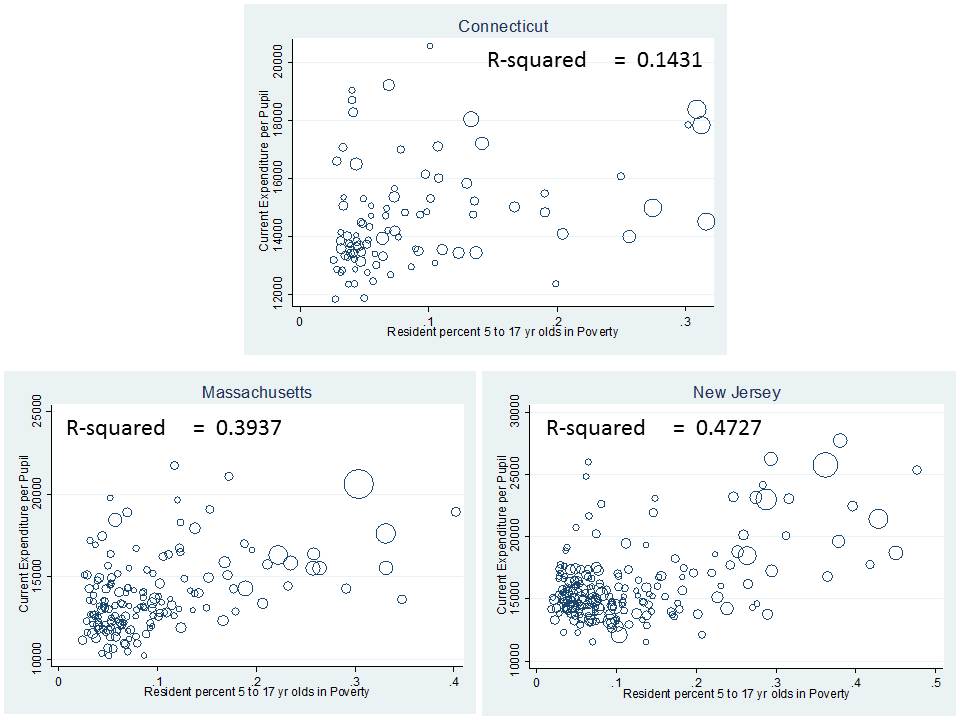
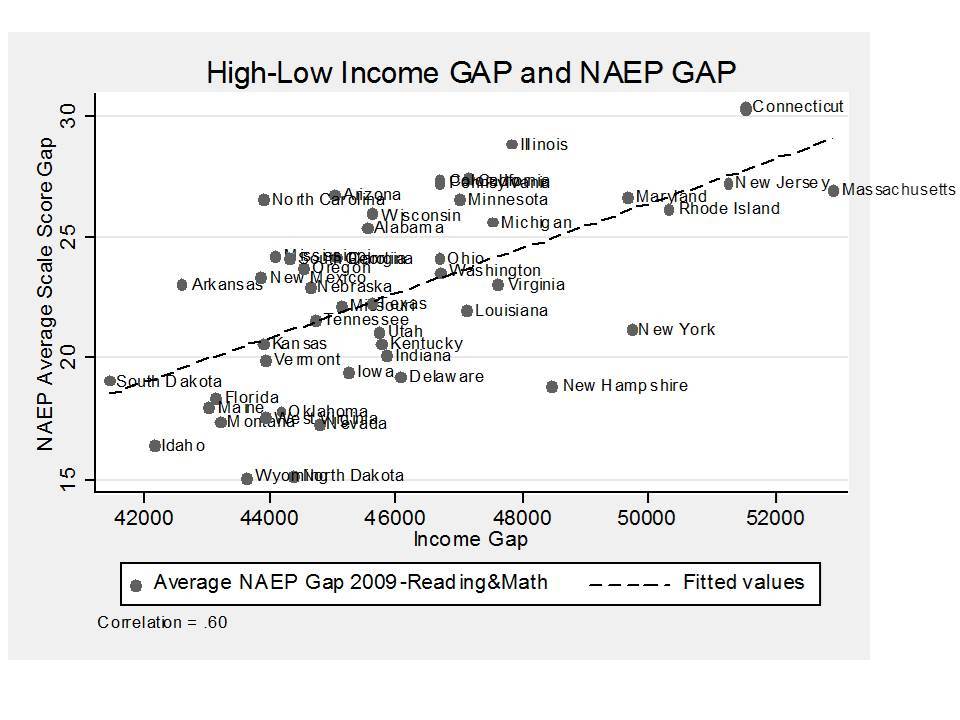
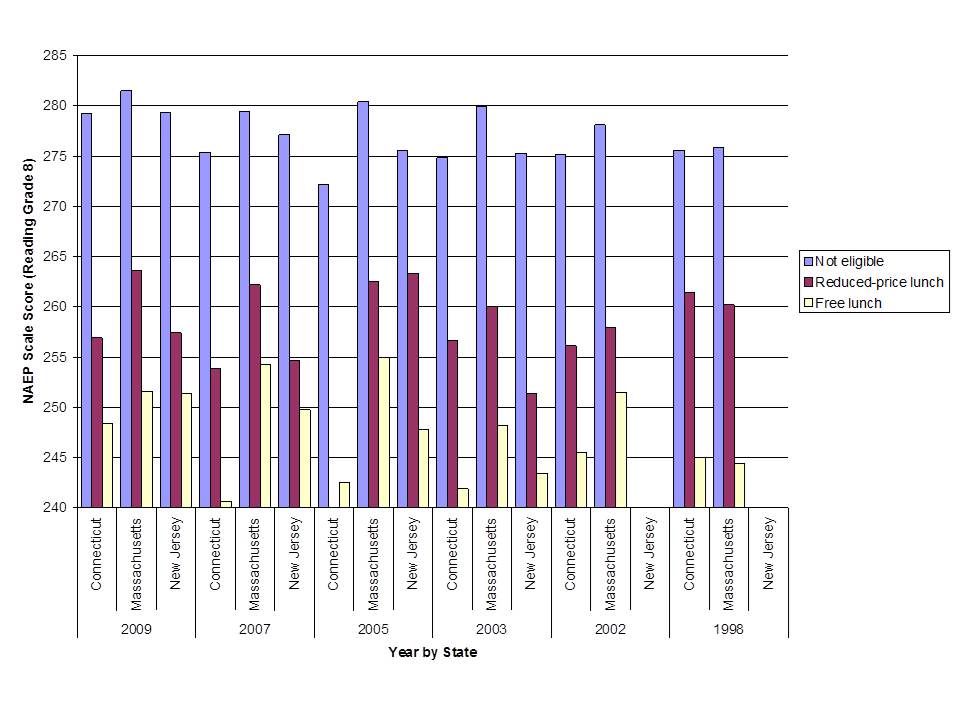
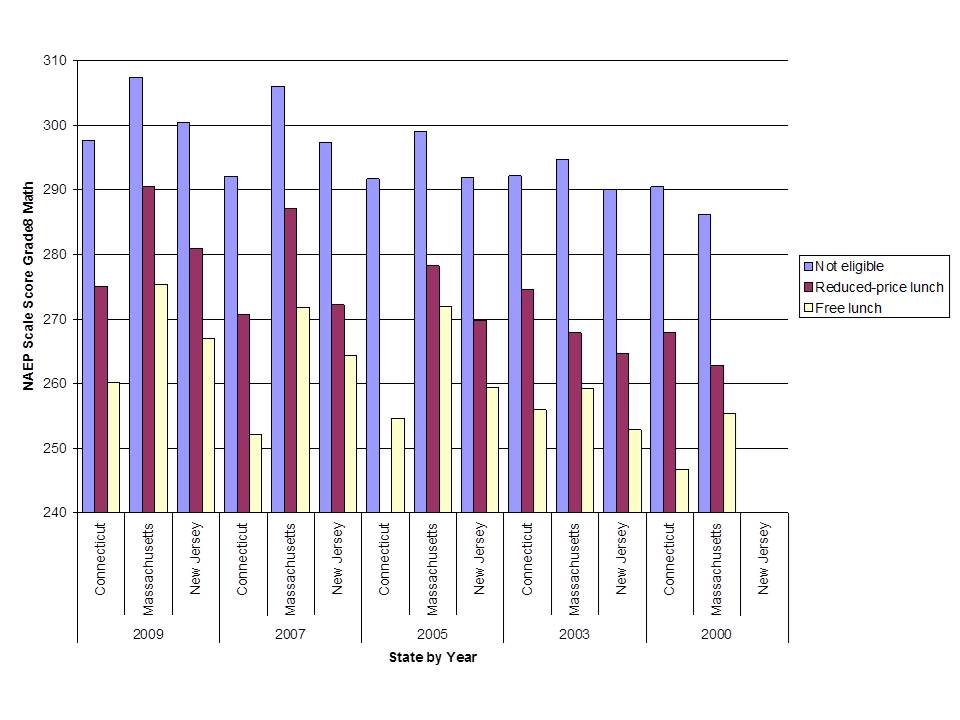
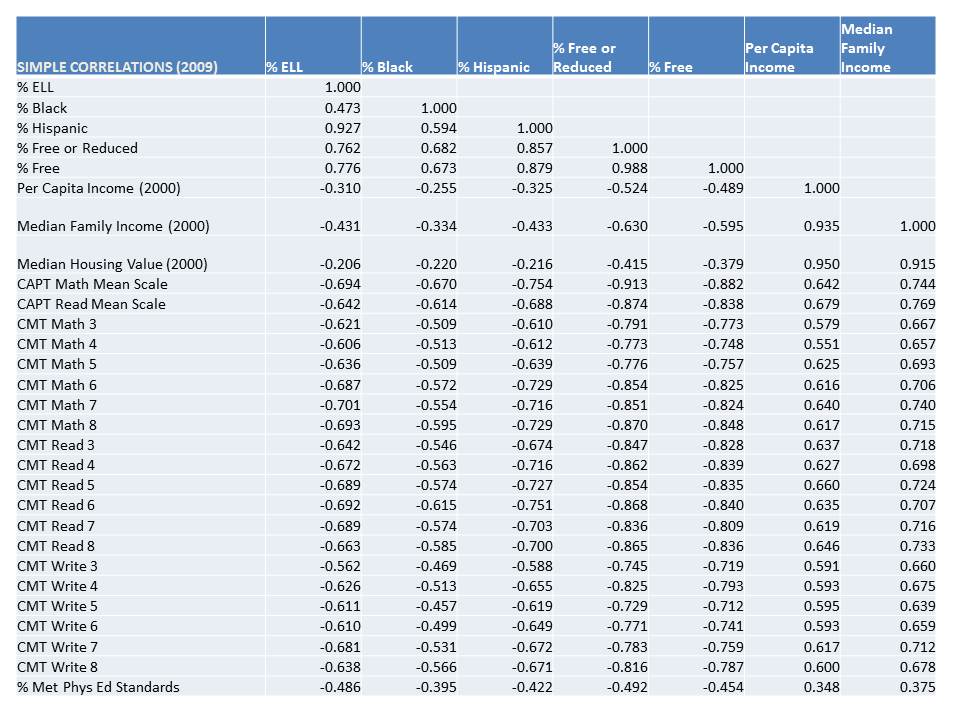
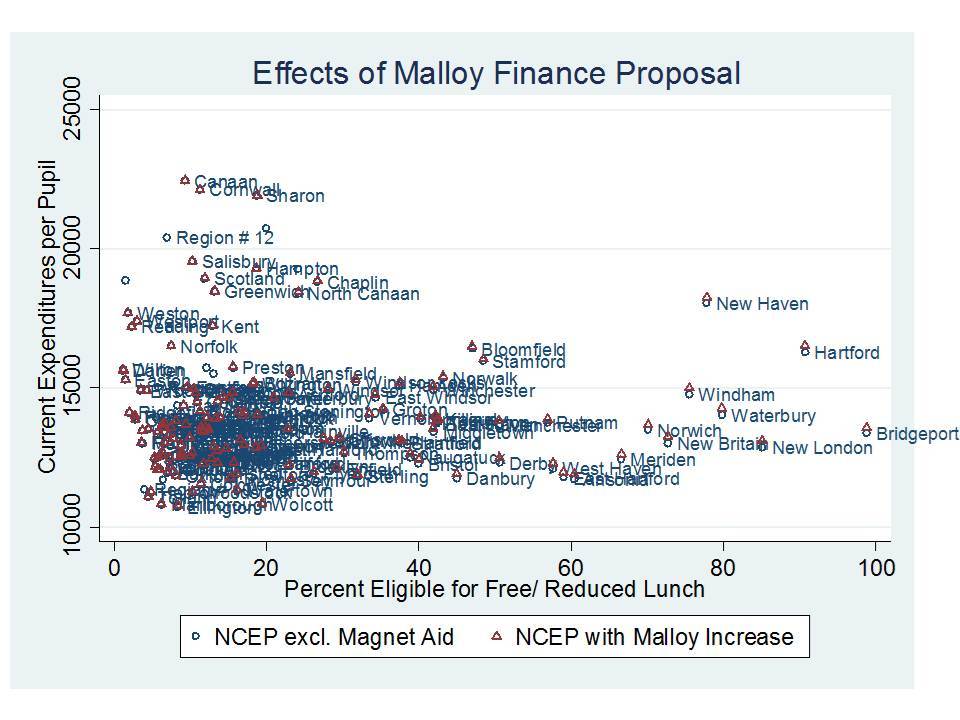
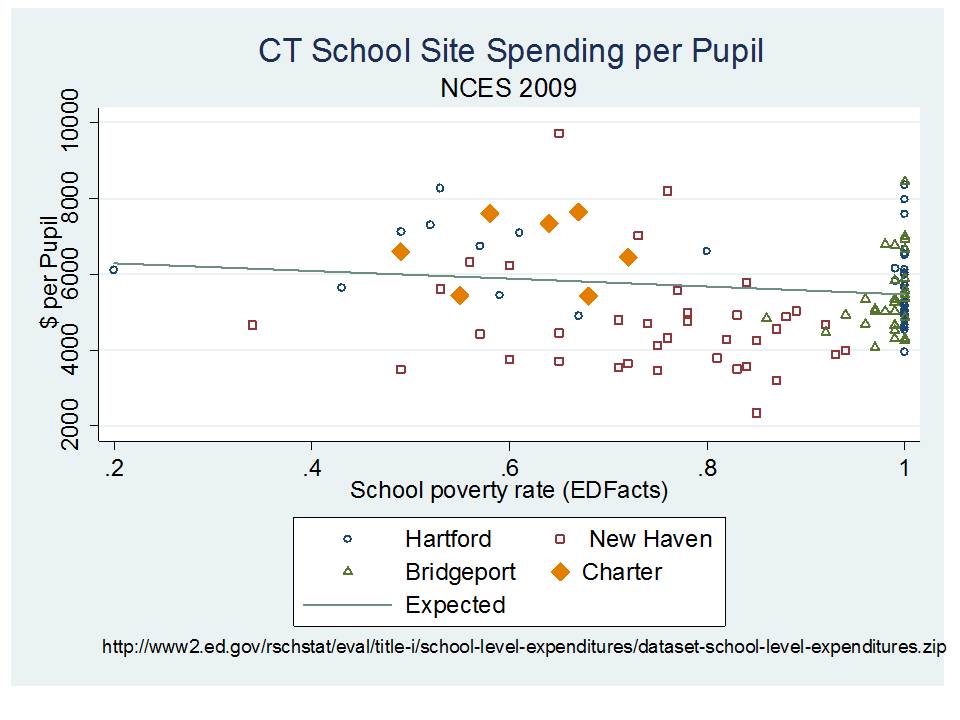
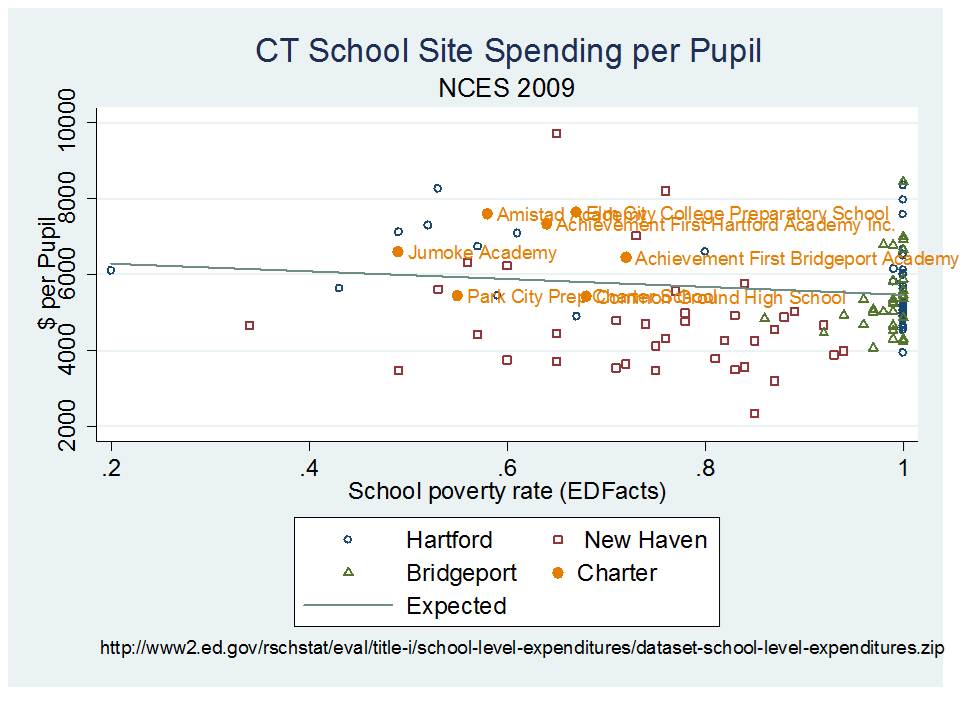
2 thoughts on “Baseless Reformy Thoughts from Connecticut (& How this year’s reforms improved decades of past performance!?)”
Comments are closed.